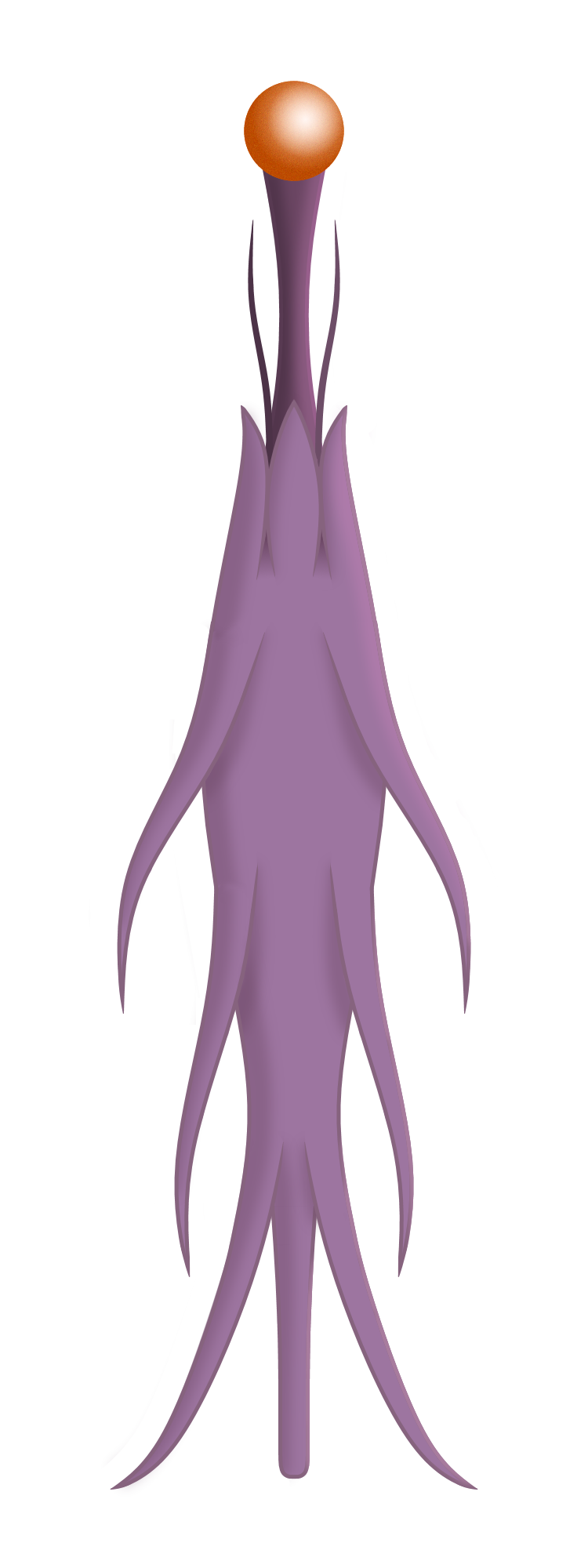Ziirb
Ziirpu (zʏr-pʉ) are a species of invertebrate nonapod sophonts that hail from the planet Viirvv in the Ziirin-Vniir (Gliese 54) system. The true species name of the ziirpu is unpronounceable by other species, as it involves the high-frequency oscillating sounds made by rapidly rubbing a pair of specialized appendages together. Ziirpu are somewhat fragile beings and therefore are quite timid, and will do anything to avoid physical violence. They are not very outgoing either, and only have three claimed systems (one of which is shared with the shyxaure).
Civilization and Culture
Major Language Groups and Dialects
Ziirpu are one of only two sophont species in known space with a universal common tongue. Every ziirb born in systems of the Shyxaure-Ziirpu Alliance speaks Vurrm, and almost all of those who hail from worlds outside the Alliance speak it as well. A few particularly isolated populations have formed their own dialects of Vurrm, but they are still fundamentally the same language.
Biology
Anatomy & Morphology
Ziirpu are vertical, highly oblong sophonts that lack almost all semblance of a skeleton save a lattice of cartilage that gives a loose structure to their vaguely tubular torsos. Their vascular oxygen carrier is coboglobin, a cobalt-based protein that turns dark amber when oxidized. Ziirpu are all varying shades of reddish-gray, with nine tendril-like appendages arranged in a trilateral symmetry (three sets of three) that serve as the means of locomotion and manipulation. The upper section of their torso splits into a three-sided flower-jaw just above the upper limbs. A very thin stalk protrudes from the center of the mouth and ends in a spherical orange-red sensor organ called an "eyebulb," which is simultaneously an ocular, acoustic, and vestibular organ. Also protruding from the mouth around the bulbstalk are a trio of short, semi-rigid, tongue-like structures which are specialized to produce vibrations of varying frequency and intensity when they are rubbed together very rapidly -a process called stridulation. This musical biomechanism forms the basis of ziirb speech.Perception & Sensory Capabilities
Visual
Ziirb visual sense is facilitated by the eyebulb organ, which acts as a single spherical compound eye. The eyebulb is able to pick up motion, definite shape, spatial orientation, and a fairly broad spectrum of electromagnetic wavelengths ranging from infrared to blue-green, in virtually all directions. This omnidirectional vision has led to a rather unique sapience in ziirpu: the rare nonfocal sapience.Auditory
Ziirb auditory sense is also facilitated by the eyebulb, which is filled with acoustic fluid. Using this, ziirpu can detect a considerably wider range of sound than most other sophonts, particularly higher frequencies; this makes them the only other known species able to naturally detect and replicate Calypsian speech.Olfactory
Ziirpu actually lack the usual sort of olfactory sense, though they are able to gain some idea of a substance's composition with specialized nerves in their tendrils.Tactile
The ziirb tactile sense is by far their strongest, and thus the sense they are most reliant on. Their entire epidermis is extremely sensitive to tactile input, particularly the tips of their tendrils. Ziirpu can easily detect the difference of a single molecular layer between two surfaces, as well as pick out micrometer-level tactile patterns.Ecology
Geographic Origin & Distribution
Ziirpu are quite uncommon outside of their home system of Ziirin and the three other systems they inhabit exclusively (Zeta Tucanae, Gliese 877, and Beta Hydri however, there are appreciable populations of them across the "southern" region of known space, particularly in shyxaure-controlled systems.Habitat & Survival Factors
Ziirpu are sensitive to environmental changes, particularly humidity and temperature, which makes them poor explorers even when adequately equipped. However, their technological advancement has allowed them to inhabit a small selection of worlds close to their home system.Archive Data
ORIGINS
- visual (500 - 950 nm)
- auditory (60 Hz - 60 kHz)
- tactile (1 μm limit)
- olfactory
The values presented here describe the conditional limits of sustained indefinite survival. The species can survive more extreme conditions for shorter amounts of exposure.
Gravity limit
1.2 G
Pressure range
0.6 to 2.4 atm
Air mix
20% to 64% O2
Temperature range
6 to 28 °C
Radiation limit
- Gamma: 0.3 Gy
- Beta: 0.05 Gy
- Alpha: 0.012 Gy
Scientific Name
Argopharus sapiens
Origin/Ancestry
Virvvigenids
Average Height
1.2 meters
Average Weight
30 kilograms




Comments